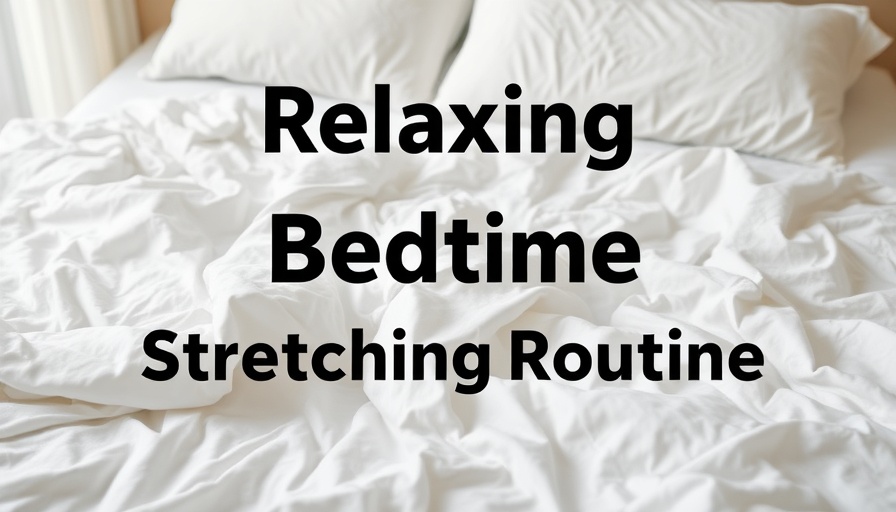
Embrace Bedtime Stretches for Relaxation
As we navigate the whirlwind of daily life, it’s easy to prioritize our obligations over self-care, particularly as the day winds down. Yet, incorporating simple bedtime stretches can transform not only the end of your day but also the quality of your sleep. Research suggests that engaging in a few minutes of stretching before bed can significantly reduce stress and promote relaxation, setting the stage for peaceful slumber.
Why Stretching is Essential Before Sleep
Stretching before bedtime isn't just a luxury; it's a necessity for both body and mind. Many people carry tension in their muscles, particularly after long hours of sitting or engaging in strenuous activities. By incorporating gentle stretches, you can alleviate this tension, calm your mind, and prepare your body for the rest it deserves.
Four Essential Bedtime Stretches
To help you unwind and tune out the complexities of the day, try incorporating these four simple stretches into your nightly routine:
- Seated Cat/Cow: This dynamic stretch helps to release tension in the spine and promotes mindfulness. Start seated with legs crossed, engage in a flow of arching and rounding your back for five deep breaths.
- Neck Stretches: Gently release neck tension by allowing your ears to fall toward your shoulders. Complete this forward, tense-free release with 3-5 gentle repetitions on each side.
- Overhead Reach: Engaging the arms while seated can alleviate shoulder tightness. Reach one arm overhead, bend slightly to the side, and repeat on the opposite side for a well-rounded stretch.
- Spinal Twist: This stretch aids digestion and releases tension from the back. As you sit, gently twist your torso to one side and then the other, allowing your spine to elongate.
Consciously limiting screen time and engaging in these stretches can not only enhance physical relaxation but also foster a more serene mental state as you ease into sleep.
Try Incorporating a Meditation Session
After your stretches, consider taking a few moments for meditation. Just 5 to 10 minutes of mindful breathing can help clear the mind and center your thoughts. Settle into a comfortable position, focus on your breath, and let go of the day's stresses. This practice not only enhances the effects of your stretching routine but also enriches your overall relaxation experience.
Conclusion: Redefine Your Nightly Routine
As you navigate through busy schedules, remember that small practices can yield significant results. By incorporating bedtime stretches into your nightly ritual, you’re not just preparing your body for rest; you’re also making an investment in your mental health. Next time you find yourself overwhelmed, allow these stretches to lead the way to tranquility. Your body will thank you, and you may find that sleep comes easier than ever before.
 Add Row
Add Row  Add
Add 



Write A Comment